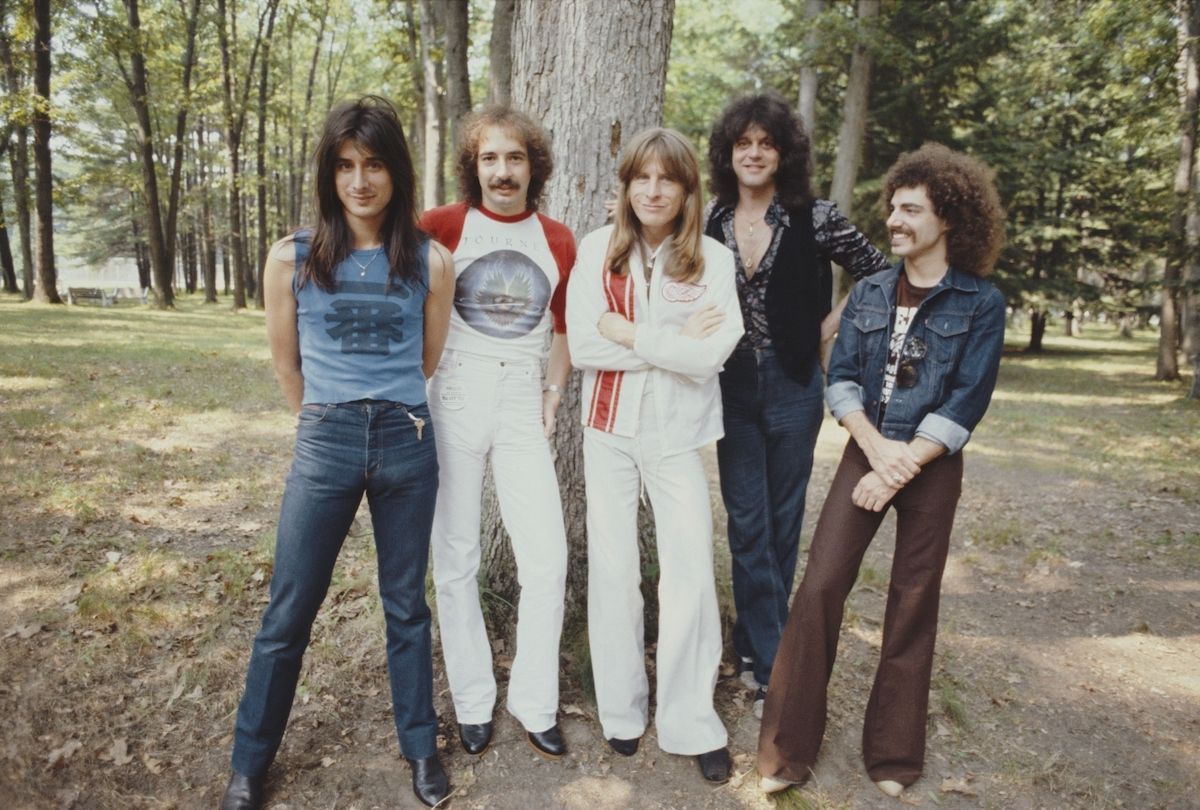As the Baby Boomers age into full-blown retirement and beyond, the Classic Rock brand has continued to pay dividends. If you ponder the genre’s growing significance over the years, it’s made for an incredible ride for music fans. When those records first saw release in the 1960s and 1970s, popular music didn’t carry much in the way of cultural freight. But in the ensuing decades, we’ve been inundated by a much-needed reevaluation of Classic Rock’s finest practitioners.
David Hamilton Golland’s "Livin’ Just to Find Emotion: Journey and the Story of American Rock" provides a welcome study of one of rock’s most enduring musical fusions. With his background in contemporary race studies — as demonstrated by such previous books as "Constructing Affirmative Action: The Struggle for Equal Employment Opportunity" and "A Terrible Thing to Waste: Arthur Fletcher and the Conundrum of the Black Republican" — Golland explores the racial dynamic inherent in Journey’s rise to fame.
In Golland’s careful hands, Journey’s story, and their music in particular, receives a much-needed critical treatment. Golland is clearly a lifelong fan, yet at the same time, he never shies away from confronting the group’s complicated history. Journey’s progress to superstardom was the product of several lineup changes, not to mention considerable interpersonal strife. When it comes to the band’s ascendancy during the Steve Perry era, Golland doesn’t pull any punches, writing that “like so much of what has moved American history, Journey’s popularity has to do with race. It was made possible by a unique combination of Black-oriented Motown and white-oriented progressive rock, a cultural appropriation made palatable to the white teenage audience of the post–civil rights era. Journey’s popularity was made possible because it was white. In a modern form of minstrelsy, these white musicians safely provided ‘Black’ music to white audiences.”
Perry’s emergence as the band’s lead singer heralded a key shift in both Journey’s style and fortunes. Gone were the group’s progressive rock pretentions, having been replaced by Perry’s silky and soulful vocals. In Golland’s words, Perry was nothing short of “a white Sam Cooke aspiring to be a white James Brown.” And Journey rode his considerable talents into the stratosphere, notching a raft of blockbuster albums and hit singles. Their standout success during the 1980s and beyond can be attributed, Golland presciently reveals, to a bedrock audience that includes a working-class listenership that could accept the Motown sound as peddled by a white band with the chops to back it up.
To Golland’s great credit, "Livin’ Just to Find Emotion" will find you absentmindedly humming “Don’t Stop Believin’” and other Journey mainstays in the same breath in which you reconsider the racial and cultural dynamics that brought them to rock’s highest heights in the first place.
 Disco group the Bee Gees pose for a portrait in gold lame outfits in 1977 (Michael Ochs Archives/Getty Images)And then there’s Bob Stanley’s "The Story of the Bee Gees: Children of the World," a vital reassessment of one of popular music’s most chameleonic acts. While they may be known for their Disco preeminence during the "Saturday Night Fever" era, the Bee Gees enjoy the distinction of landing hit records across four decades, from the 1960s through the 1980s. Incredibly, the Brothers Gibb were able to withstand one generic shift after another on their road to becoming one of rock’s bestselling groups. Stanley takes great pains to not only explore the Gibbs’ musical growth across the decades, but to afford readers with a stirring look at the dramatic arc of the relationships and experiences that marked their lives. He is to be commended for elevating the human story at the heart of the Bee Gees’ music.
Disco group the Bee Gees pose for a portrait in gold lame outfits in 1977 (Michael Ochs Archives/Getty Images)And then there’s Bob Stanley’s "The Story of the Bee Gees: Children of the World," a vital reassessment of one of popular music’s most chameleonic acts. While they may be known for their Disco preeminence during the "Saturday Night Fever" era, the Bee Gees enjoy the distinction of landing hit records across four decades, from the 1960s through the 1980s. Incredibly, the Brothers Gibb were able to withstand one generic shift after another on their road to becoming one of rock’s bestselling groups. Stanley takes great pains to not only explore the Gibbs’ musical growth across the decades, but to afford readers with a stirring look at the dramatic arc of the relationships and experiences that marked their lives. He is to be commended for elevating the human story at the heart of the Bee Gees’ music.
Want a daily wrap-up of all the news and commentary Salon has to offer? Subscribe to our morning newsletter, Crash Course.
Some readers may be surprised to discover that behind the group’s hitmaking veneer, the Brothers Gibb suffered from numerous false starts and interpersonal discord, not to mention the highly public failure and ensuing PR disaster associated with the "Sgt. Pepper’s Lonely Hearts Club Band" film, an incredible misstep in the wake of "Saturday Night Fever’s" global success. As with Golland’s "Livin’ Just to Find Emotion," Stanley provides us with a powerful reevaluation of one of popular music’s most enduring stalwarts.



Shares